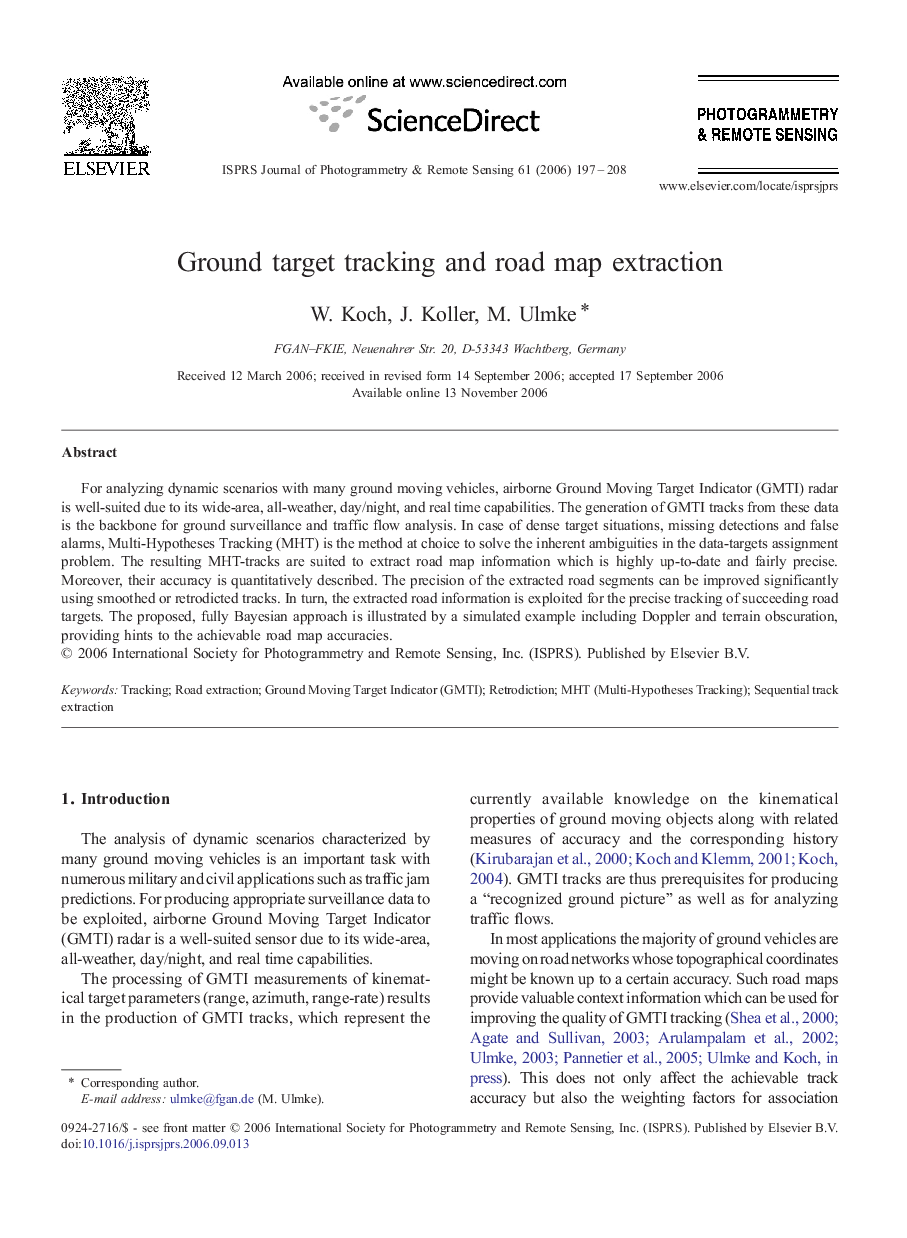| Article ID | Journal | Published Year | Pages | File Type |
|---|---|---|---|---|
| 556170 | ISPRS Journal of Photogrammetry and Remote Sensing | 2006 | 12 Pages |
For analyzing dynamic scenarios with many ground moving vehicles, airborne Ground Moving Target Indicator (GMTI) radar is well-suited due to its wide-area, all-weather, day/night, and real time capabilities. The generation of GMTI tracks from these data is the backbone for ground surveillance and traffic flow analysis. In case of dense target situations, missing detections and false alarms, Multi-Hypotheses Tracking (MHT) is the method at choice to solve the inherent ambiguities in the data-targets assignment problem. The resulting MHT-tracks are suited to extract road map information which is highly up-to-date and fairly precise. Moreover, their accuracy is quantitatively described. The precision of the extracted road segments can be improved significantly using smoothed or retrodicted tracks. In turn, the extracted road information is exploited for the precise tracking of succeeding road targets. The proposed, fully Bayesian approach is illustrated by a simulated example including Doppler and terrain obscuration, providing hints to the achievable road map accuracies.
